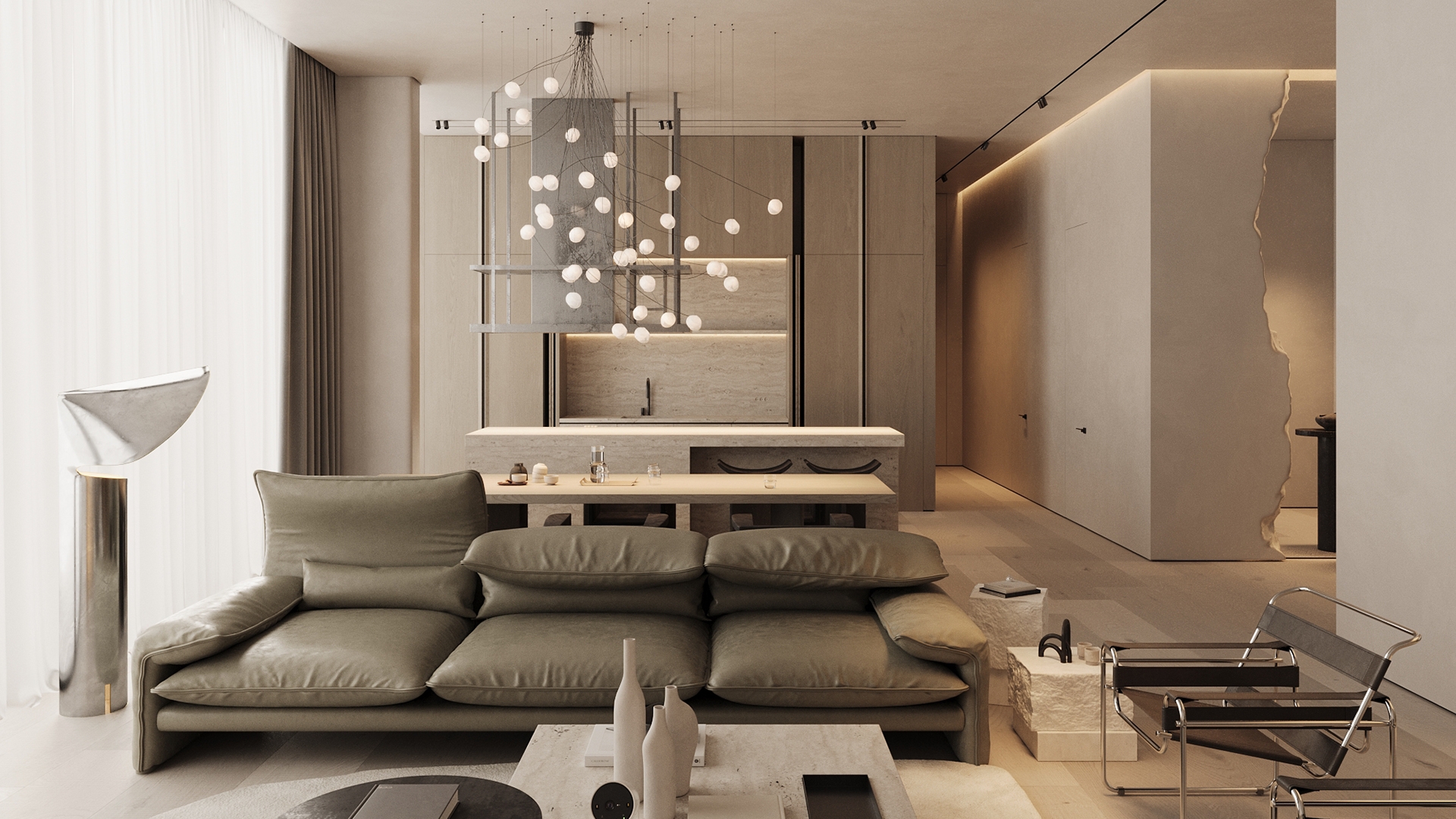Community Wasl (وصل ) envisions a new urban future for Dubai through a climate-responsive approach that blends traditional settlement logic with innovative material systems, drawing from the principles of the Garden City. Structured around a linear mobility spine and intersected by ecological corridors, the project establishes a network of walkable, self-sufficient neighborhoods.

The project reinterprets the Garden City model as a corridor-based urban framework, where each neighborhood is anchored by a green communal spine intersected by perpendicular service routes. This structure supports a sequence of compact, walkable clusters shaped by environmental and social performance. At the domestic scale, the spatial layout draws from Emirati traditions—such as al-saha and al-maydan—to establish clear transitions between public, semi-public, and private zones. Shaded in-between spaces and layered thresholds reinforce social proximity and cultural continuity.
A modular system of ceramic elements defines the breathable building envelope, serving both structural and climatic functions. Together, the architectural and urban form an integrated system of neighborhoods attuned to microclimate regulation, material efficiency, and everyday life.

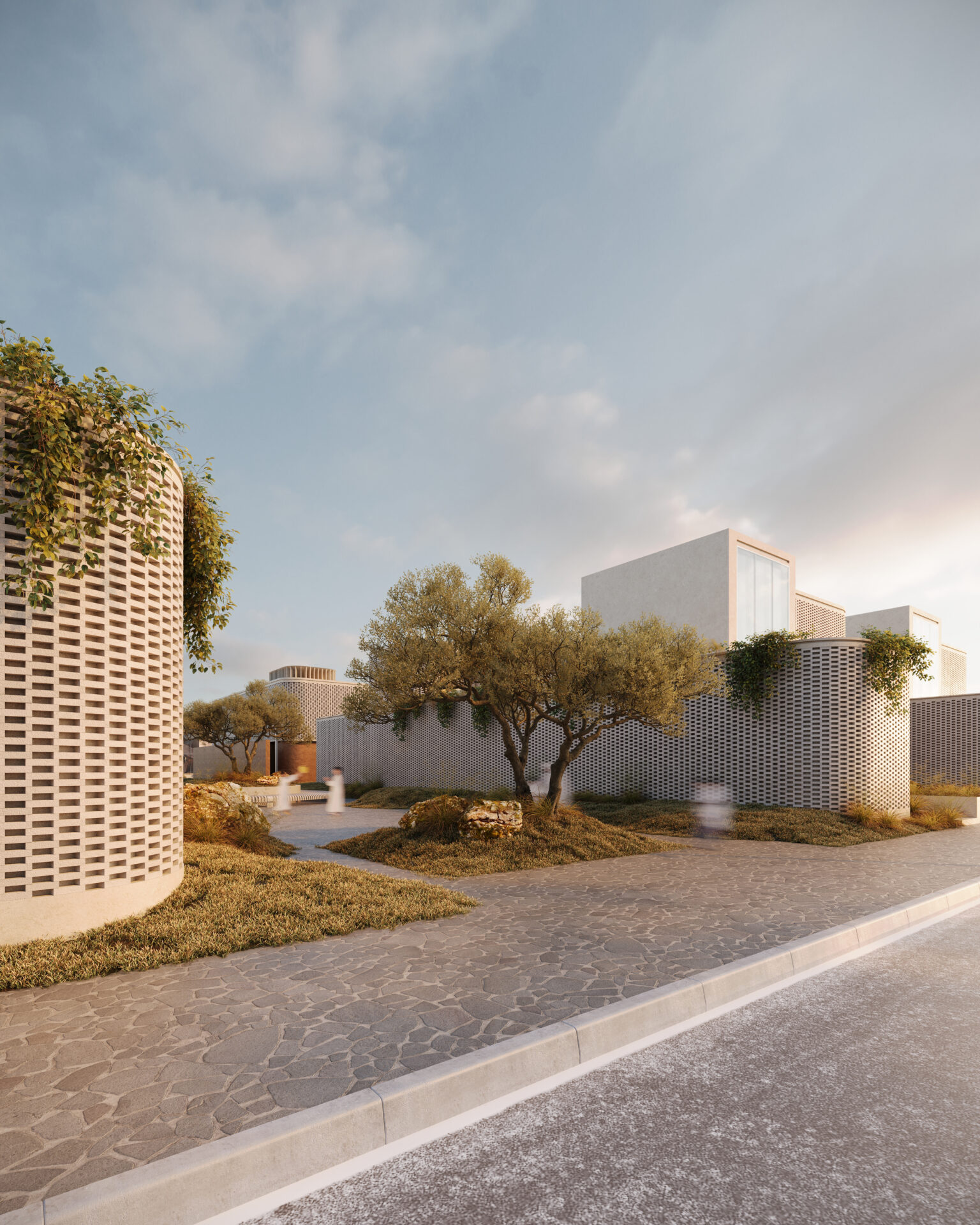


The design employs a central organizing axis with modular plots branching from it, with each house shaped by passive strategies, ceramic techniques, and minimalist material logic. This allows the system to grow, contract, or reconfigure without compromising its principles.
Neighborhoods are treated as interconnected zones of influence, each retaining autonomy while being linked through walkable infrastructure and shared amenities. Key features include green communal corridors and semi-private in between spaces for social interaction, as well as a layered domestic layout with a clear division of public, semi-public and private zone.

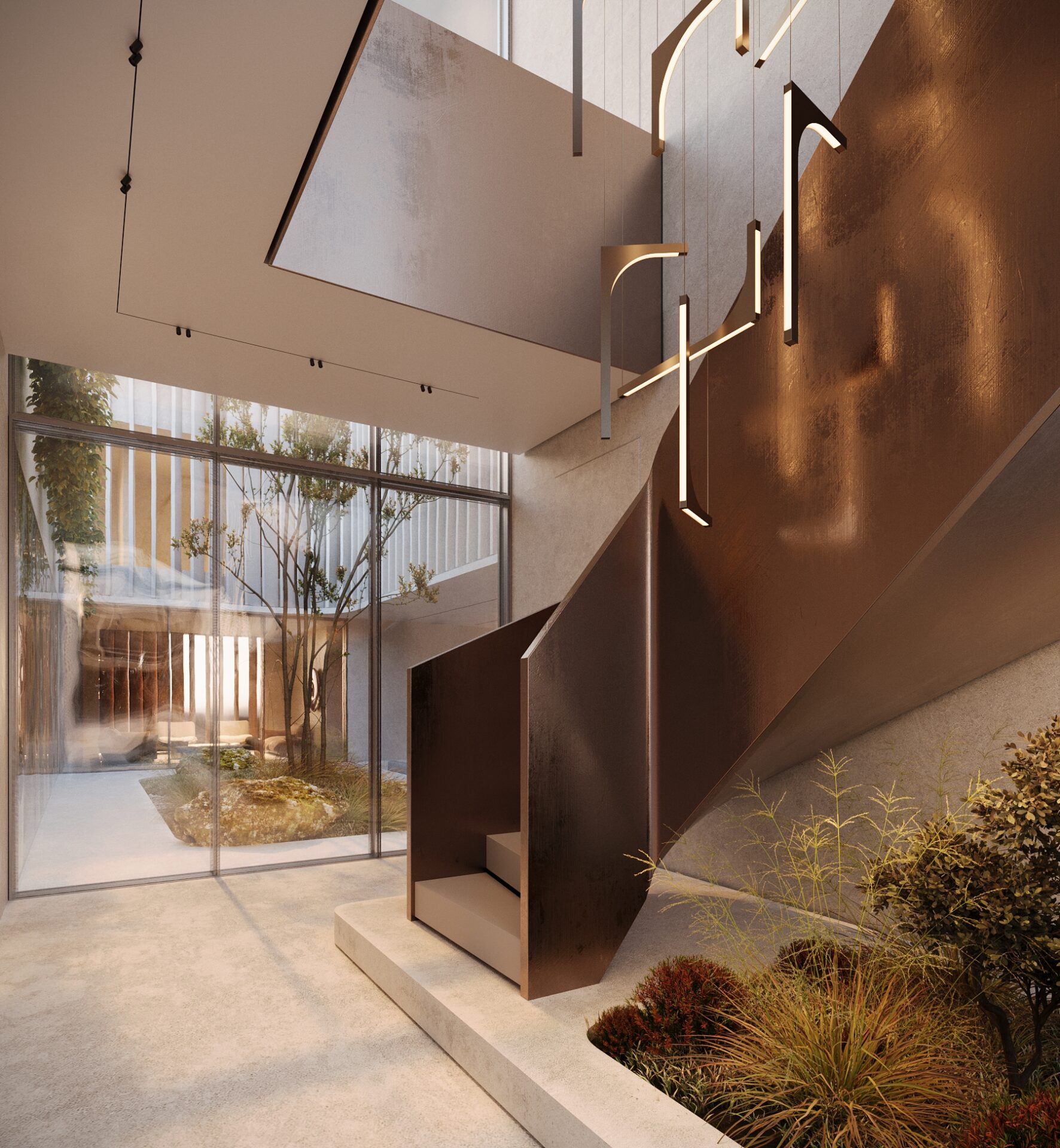
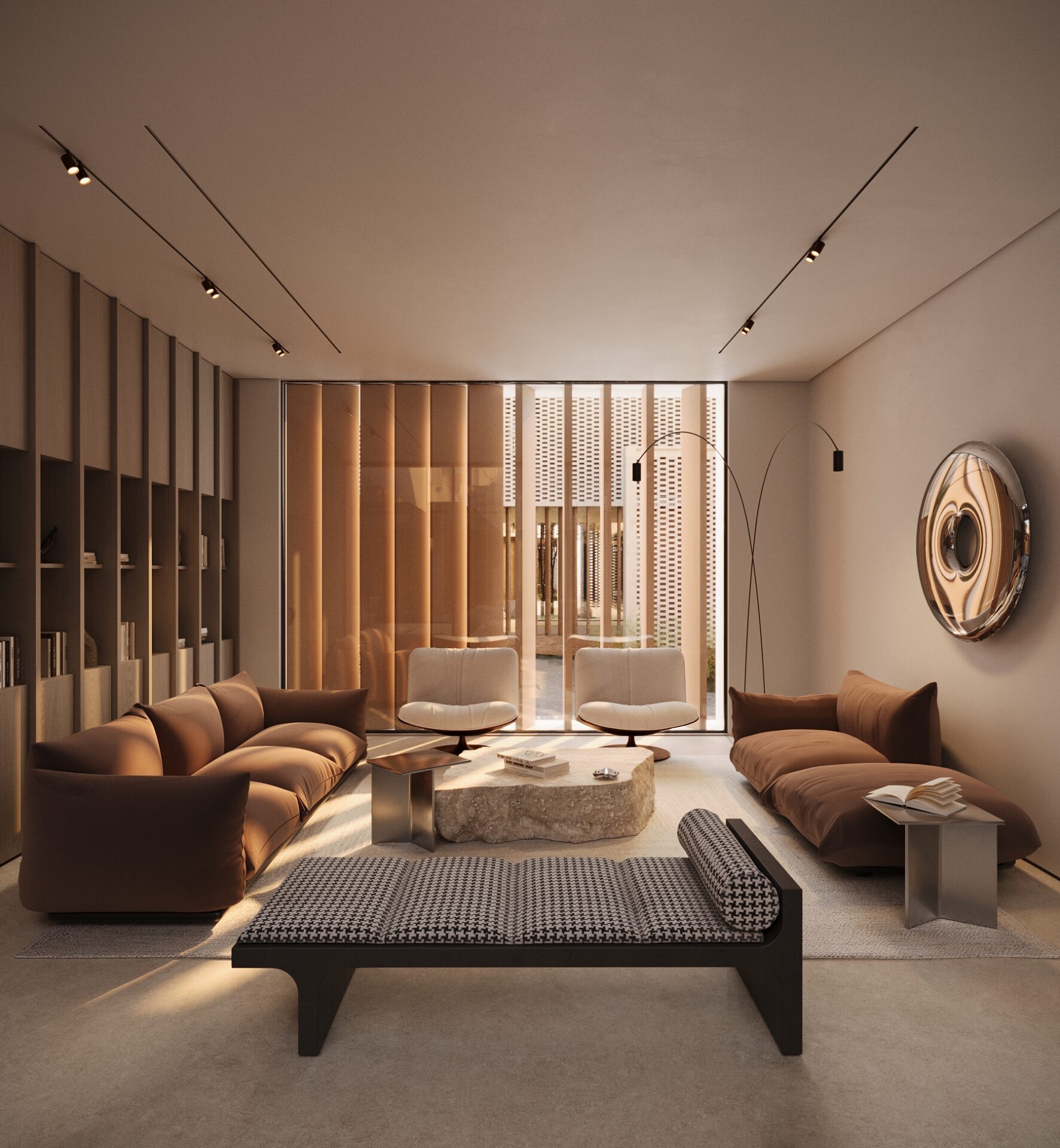
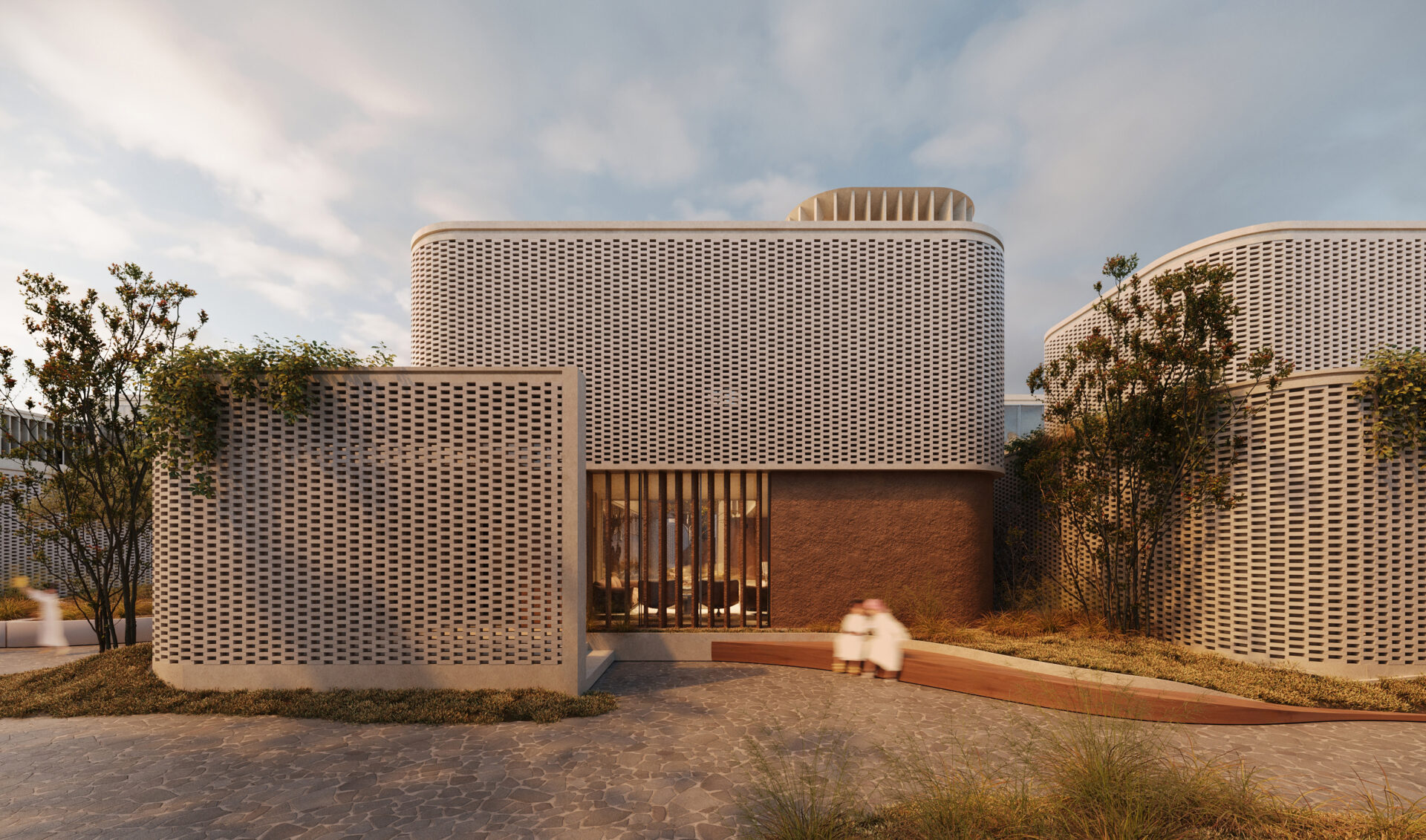

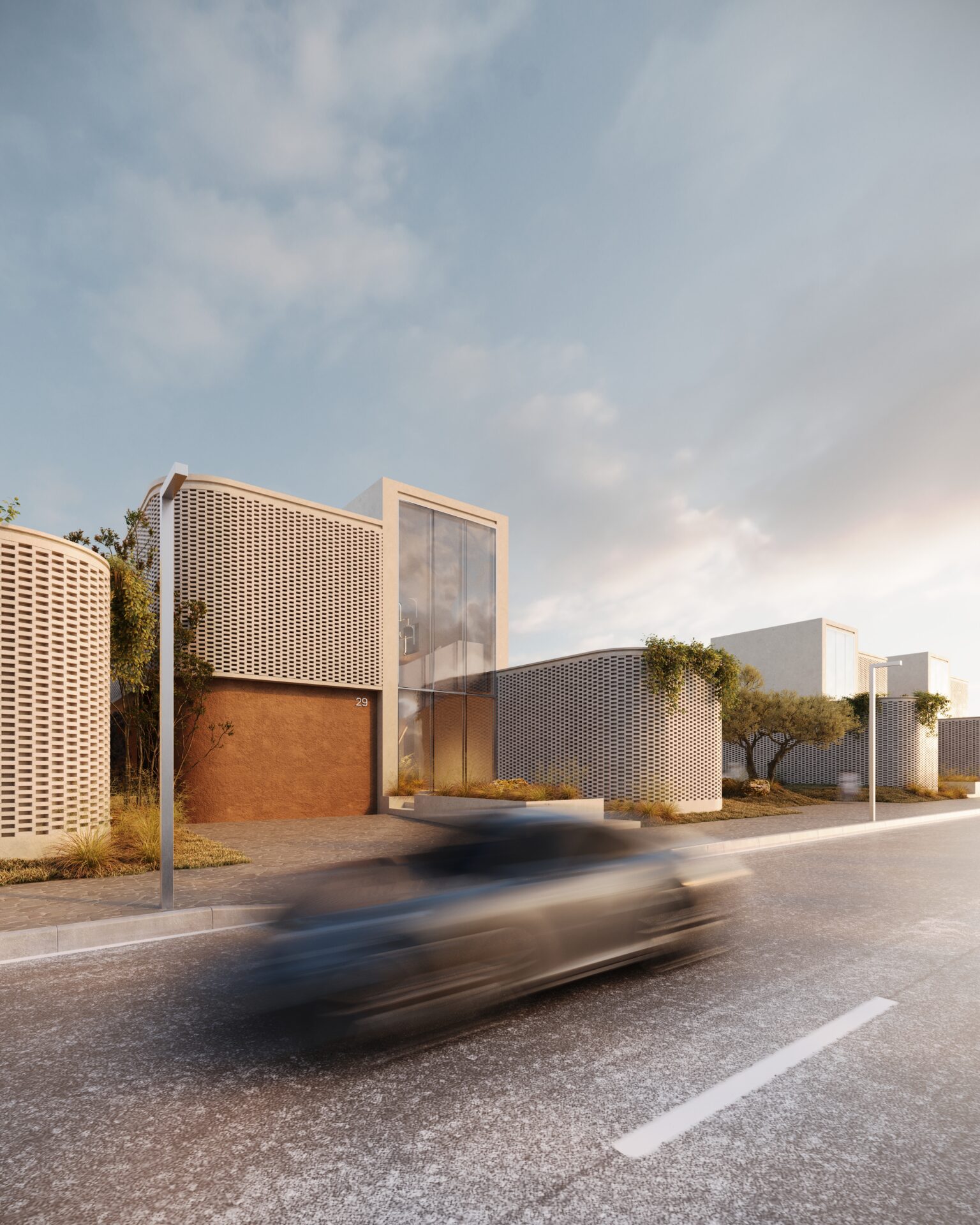
A wind tower-inspired cooling system utilizes underground air channels, while triple-skinned ceramic façade with self-locking geometry and cross-ventilation channels enhances thermal performance. The modular wall system combines structural support with passive cooling functions. Ceramic modules are injected into 3D-printed molds, forming self-licking units with porous outer layers and a solid inner core. Integrated vertical air ducts enable airflow within the wall assembly, contributing to passive cooling. Recycled wood fibers are used as insulation and interior surface treatments.
The passive ventilation system integrates air circulation, underground cooling tubes, and façade-level heat dissipation. This overall strategy reduces energy demand while enhancing thermal comfort and construction efficiency.
The project delivers a scalable, climate-adapted housing system that unifies sustainability, tradition, and modular growth. It presents a model for neighborhood-making in hot-arid environments, where environmental performance and spatial identity converge. The outcome is not just a set of buildings – but an integrated urban fabric that breathes, connects, and evolves with its inhabitants.

